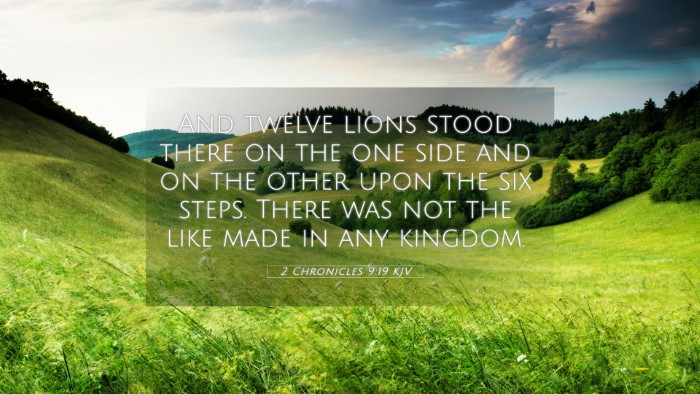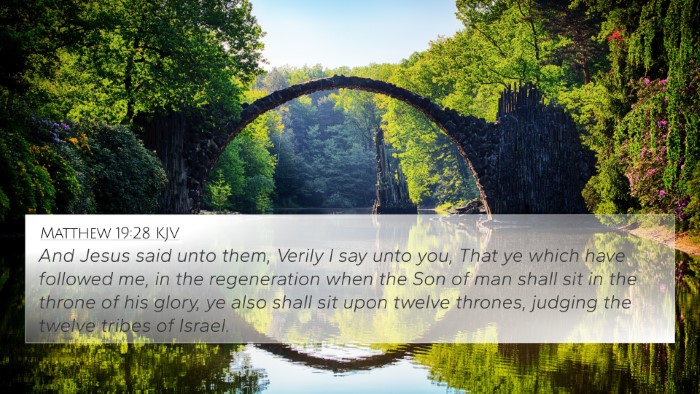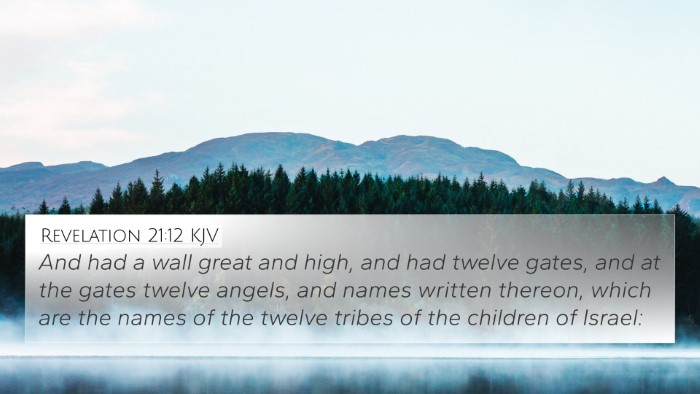Understanding 2 Chronicles 9:19
2 Chronicles 9:19 reads: "And the throne had six steps, and the top of the throne was round behind: and there were stays on either side on the place of the seat, and two lions standing by the stays." This verse provides a vivid description of the grandeur associated with the throne of Solomon, highlighting architectural and artistic details that signify wealth and divine favor.
Summary of Insights
This verse not only illustrates the physical aspects of the throne but also symbolizes the majesty of King Solomon's reign. Commentators such as Matthew Henry, Albert Barnes, and Adam Clarke elaborate on several layers of meaning found within this passage:
- Majesty and Authority: The six steps leading up to the throne convey the height of Solomon's authority, suggesting that his kingship is elevated above ordinary rule. Matthew Henry notes that the design aimed to evoke reverence and respect, which was fitting for a king.
- Symbolism of the Lions: The presence of lions, often seen as symbols of strength and authority, serves to underline Solomon's power. Albert Barnes remarks that these lions represent not only worldly power but also the protection and strength endowed by God to his chosen ruler.
- Architectural Significance: Adam Clarke discusses the importance of the unique design, indicating that it was not only a throne but a representation of the kingdom itself, showcasing the divine order and present glory of God in Israel.
- Spiritual Meaning: When looking at the spiritual implications, this verse signifies that a true ruler behaves with wisdom and guidance from God, an aspect that Solomon embodied—reflecting his prayer for wisdom as seen in 1 Kings 3:5-14.
- The Royal Dignity: The intricacy of the throne's design is symbolic of the royal dignity that comes from God. Commentators emphasize that Solomon's achievements and the splendor of his kingdom serve as a testament to God’s faithfulness to His promises to David.
Cross-References:
- 1 Kings 10:18-20 – A detailed description of the throne’s grandeur.
- Psalm 72:1-2 – A prayer for the king to rule with righteousness.
- Isaiah 9:6-7 – Prophecy regarding a ruler who would establish justice.
- Matthew 1:1 – The genealogy of Jesus, linking back to David and Solomon’s lineage.
- Revelation 20:4 – A vision of thrones which emphasize King-like authority in the eschaton.
- 2 Samuel 7:12-13 – God's promise to David about establishing his kingdom.
- 1 Chronicles 29:23 – Solomon's reigning as king in place of David.
Thematic Connections:
This verse encourages an exploration into the connections and themes present in the broader narrative of Scripture. Themes such as divine authority, royal representation, and God’s promises are threads that intertwine across both the Old and New Testaments.
Conclusion:
In studying 2 Chronicles 9:19 through cross-reference, one uncovers a rich tapestry of biblical themes highlighting leadership, divine endorsement, and the architecture of authority. The details of the throne serve not only as a historical account but as an invitation to reflect upon the qualities that define true leadership in accordance with God’s purpose.
Using Cross-References Effectively:
For those looking to deepen their understanding of Scriptures, tools for Bible cross-referencing such as a bible concordance or a bible cross-reference guide can be invaluable. By utilizing these resources, individuals can engage in a cross-reference Bible study that reveals connections between verses, illustrating the continuity and unity of God’s Word.
Encouragement for Further Study:
Consider delving into the comparative study of Pauline epistles or identifying connections between Old and New Testament teachings. How do various passages speak to one another? Engaging with these thematic Bible verse connections fosters a deeper understanding of biblical truths.




